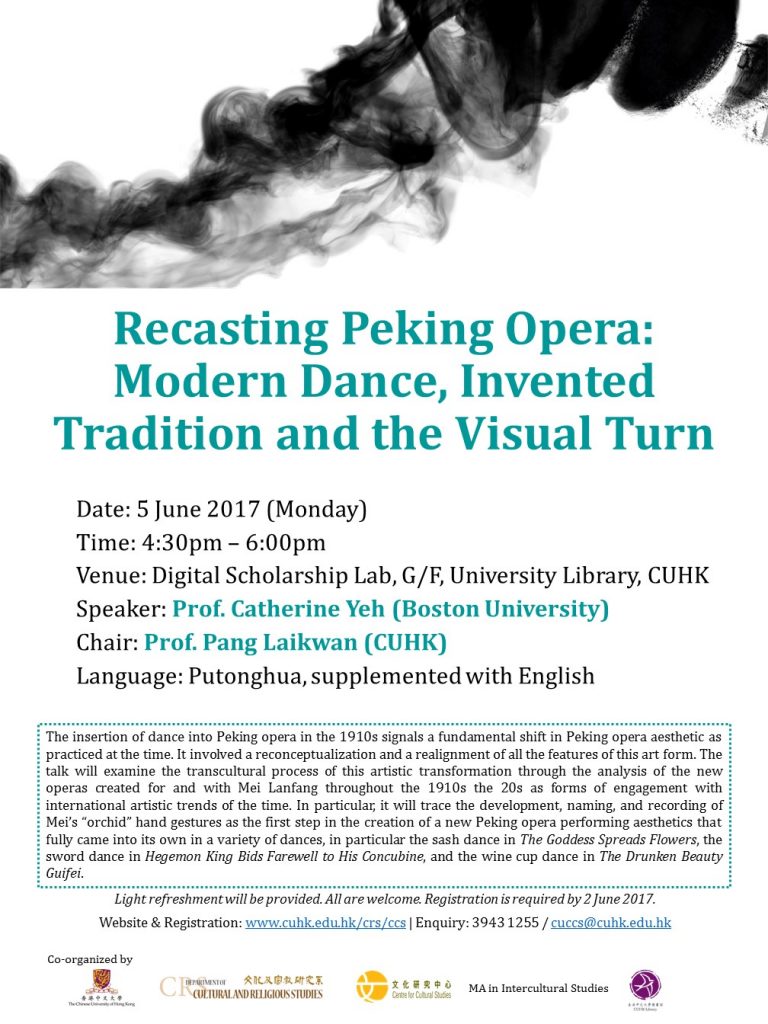Date: 5 June 2017 (Monday)
Time: 4:30pm – 6:00pm
Venue: Digital Scholarship Lab, G/F, University Library, CUHK
Speaker: Prof. Catherine Yeh (Boston University)
Chair: Prof. Pang Laikwan (CUHK)
Language: Putonghua, supplemented with English
Registration: https://goo.gl/forms/rtDkMdbD63ydXzsm1
The insertion of dance into Peking opera in the 1910s signals a fundamental shift in Peking opera aesthetic as practiced at the time. It involved a reconceptualization and a realignment of all the features of this art form. The talk will examine the transcultural process of this artistic transformation through the analysis of the new operas created for and with Mei Lanfang throughout the 1910s the 20s as forms of engagement with international artistic trends of the time. In particular, it will trace the development, naming, and recording of Mei’s “orchid” hand gestures as the first step in the creation of a new Peking opera performing aesthetics that fully came into its own in a variety of dances, in particular the sash dance in The Goddess Spreads Flowers, the sword dance in Hegemon King Bids Farewell to His Concubine, and the wine cup dance in The Drunken Beauty Guifei.
About Speaker
Professor Catherine Vance Yeh is Professor of Chinese & Comparative Literature in the Department of World Language and Literatures, and the Director of the Center for the Study of Asia, at Boston University. Her book publications include The Chinese Political Novel: Migration of a World Genre (2015). The Chinese translation of Shanghai Love: Courtesans, Intellectuals and Entertainment Culture, 1850-1910 (2012). Performing the ‘Nation’: Gender Politics in Literature, Theatre and the Visual Arts of China and Japan, 1880-1940 (Co-edited with Doris Croissant and Joshua S. Mostow (2008); Shanghai Love: Courtesans, Intellectuals and Entertainment Culture, 1850-1910 (2006).
Light refreshment will be provided. All are welcome. Registration is required by 2 June 2017.
Website: www.cuhk.edu.hk/crs/ccs
Enquiry: 3943 1255 / cuccs@cuhk.edu.hk
Co-organized by the Centre for Cultural Studies, MA in Intercultural Studies, the Department of Cultural and Religious Studies, and The Chinese University of Hong Kong Library

